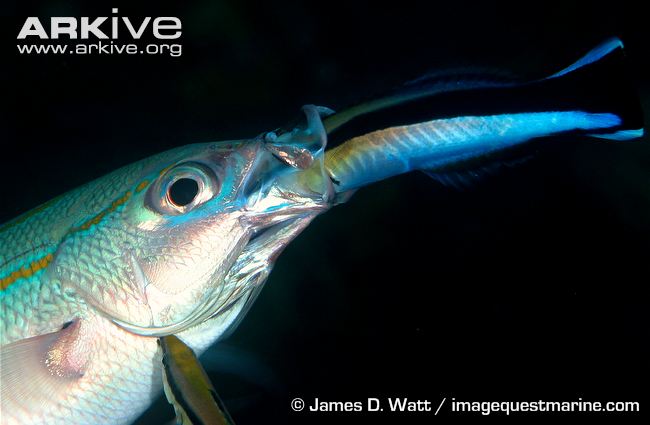
Labroides dimidiatus
FAMILY
Labridae
TAXONOMY
Labroides dimidiatus Valenciennes, 1839, El Tыr, Sinai Coast,
Egypt, Gulf of Suez; Mauritius.
OTHER COMMON NAMES
English: Bridled beauty, cleaner wrasse; French: Bande bleue,
nettoyeur а poisson doctиre, poisson nettoyeur commun.
PHYSICAL CHARACTERISTICS
Total length 4.5 in (11.5 cm). Adults mostly light blue, with
long black stripe running along each side of body, widening
as it approaches the tail. Juveniles black with blue dorsal
stripe.
DISTRIBUTION
Throughout the Indo-Pacific region, west to the Red Sea and
East Africa, north to the southern tip of Japan, and as far east
as the Marquesas and Ducie Islands in the south central Pacific
Ocean.
HABITAT
Prefers coral reef areas from surface waters to 130 ft (40 m)
deep.
BEHAVIOR
Known for its cleaning habits, picking at and removing ectoparasites
and assorted detritus on various species of fishes.
Individuals or pairs set up stations, where they remove material
from the bodies, gills, and even mouths of their “clients.”
Stereotyped signals between the two fishes help ensure that the
cleaning goes smoothly, and the cleaner does not end up as the
client’s dinner.
FEEDING ECOLOGY AND DIET
Attains bulk of the diet from ectoparasites and detritus on
other fishes.
REPRODUCTIVE BIOLOGY
Sometimes lives in pairs, but frequently in harems of one dominant
male and 6–10 females. Sex reversal occurs when domi-
nant male is removed from a harem. The dominant female assumes
his place, and becomes a functional male in about two
weeks.
CONSERVATION STATUS
Not listed by the IUCN.
SIGNIFICANCE TO HUMANS
Common aquarium fish.
Other popular Animals
Photo Gallery of - Bluestreak cleaner wrasse

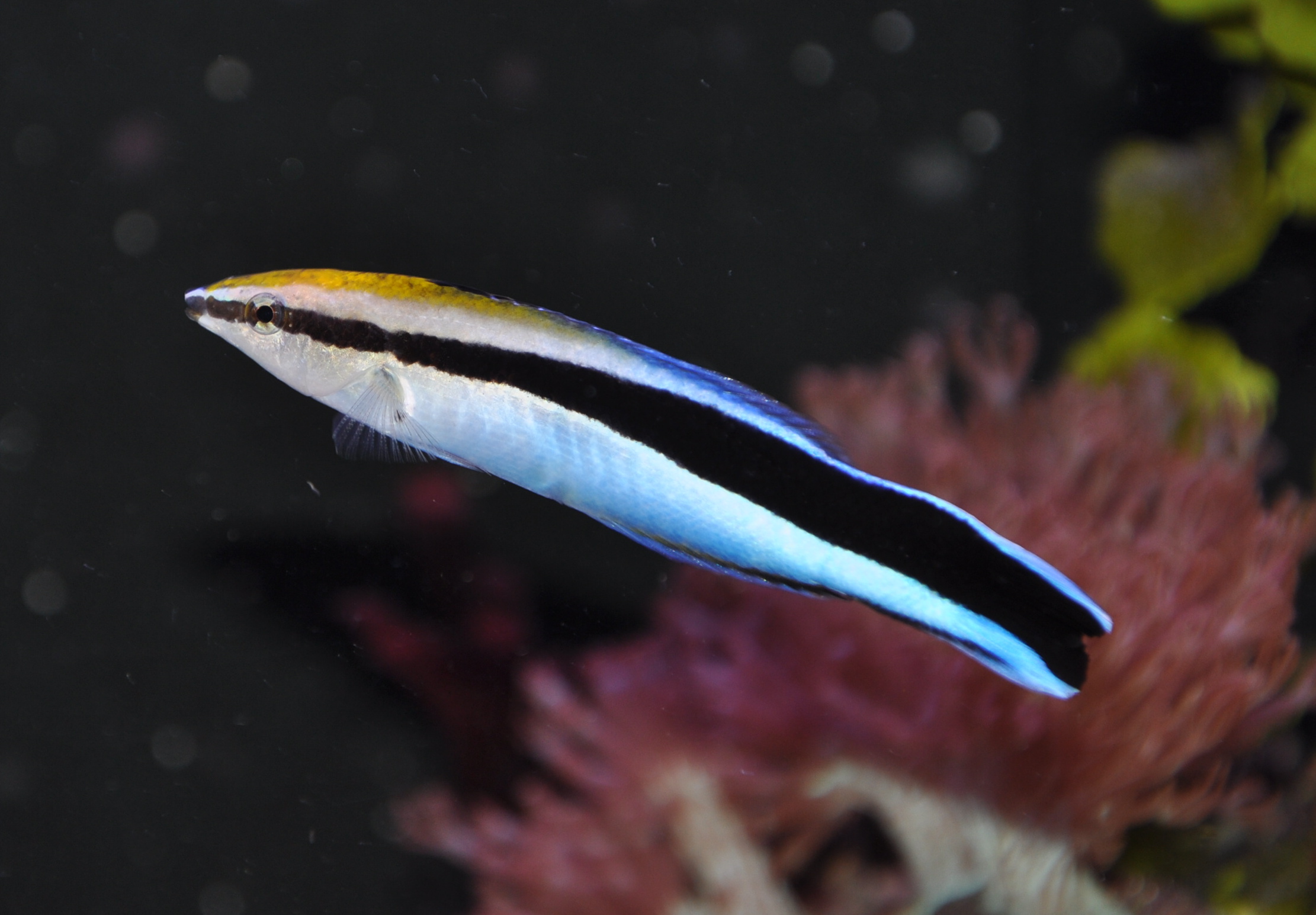
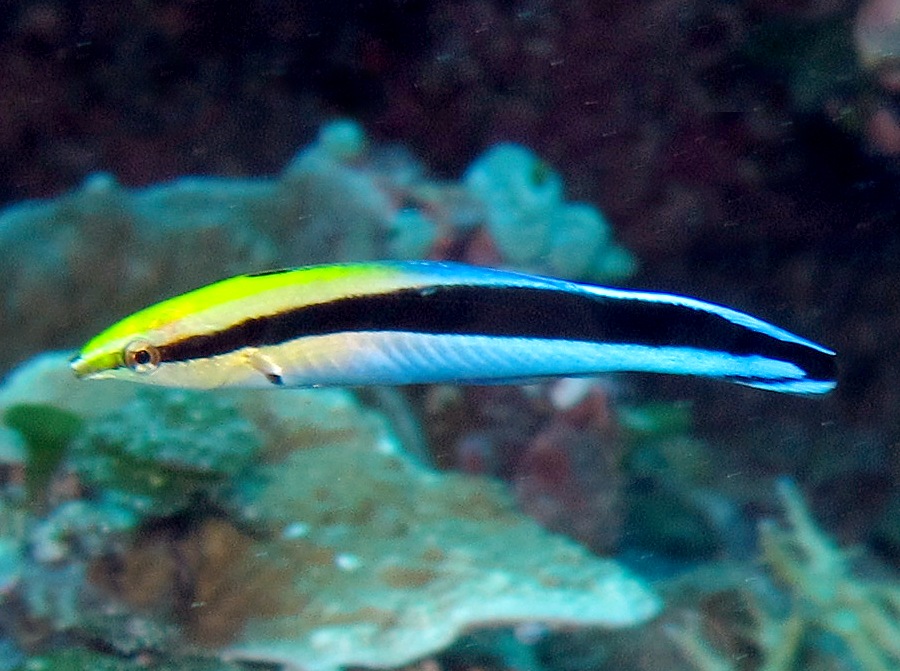
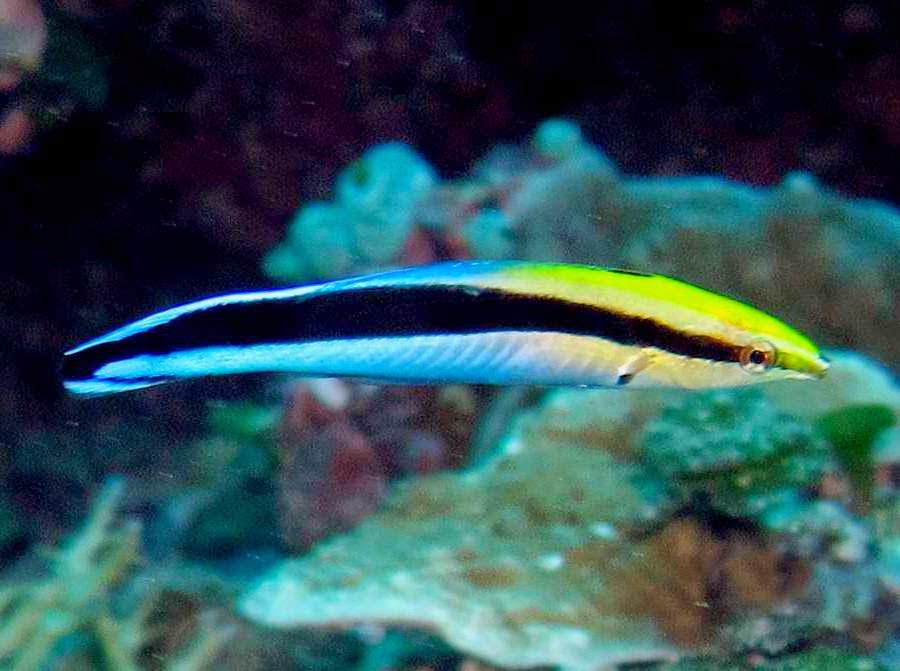
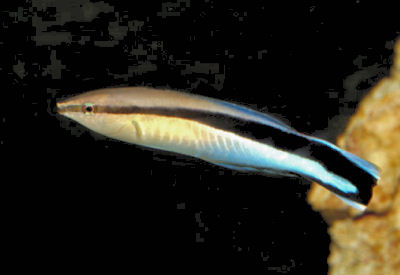
 Animalia Life
Animalia Life